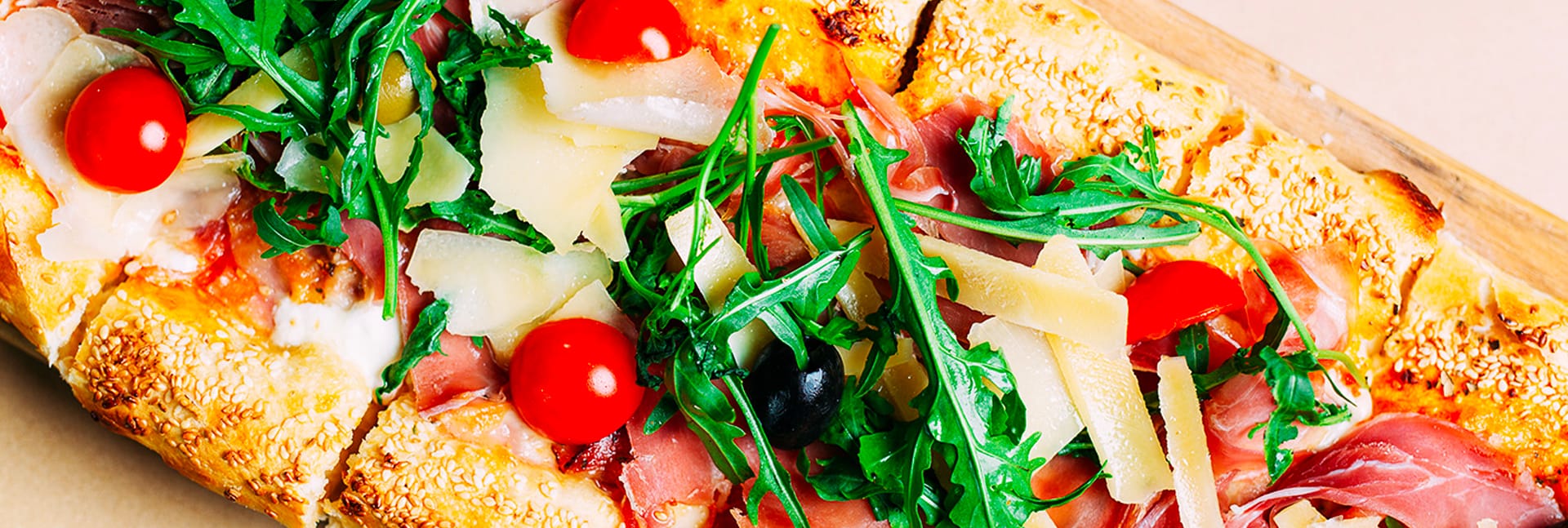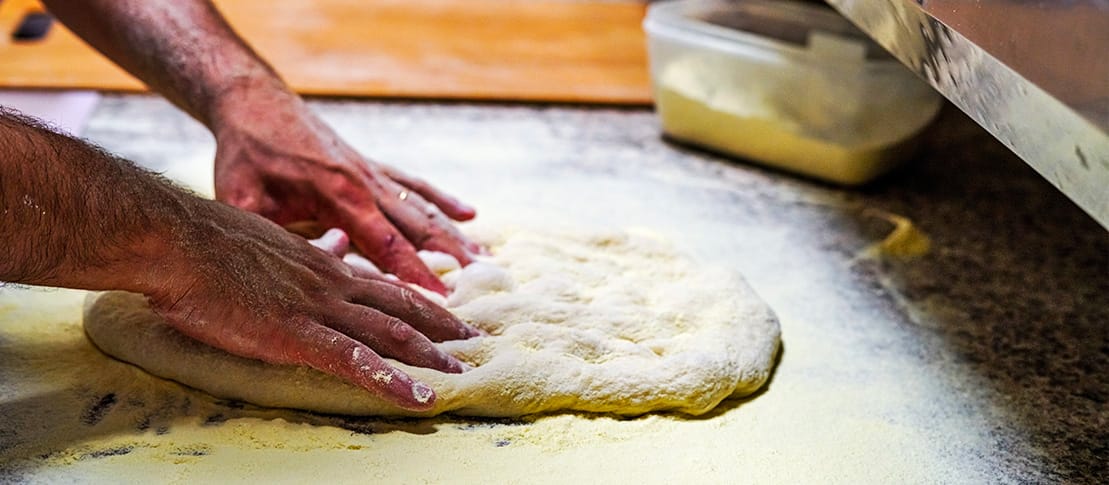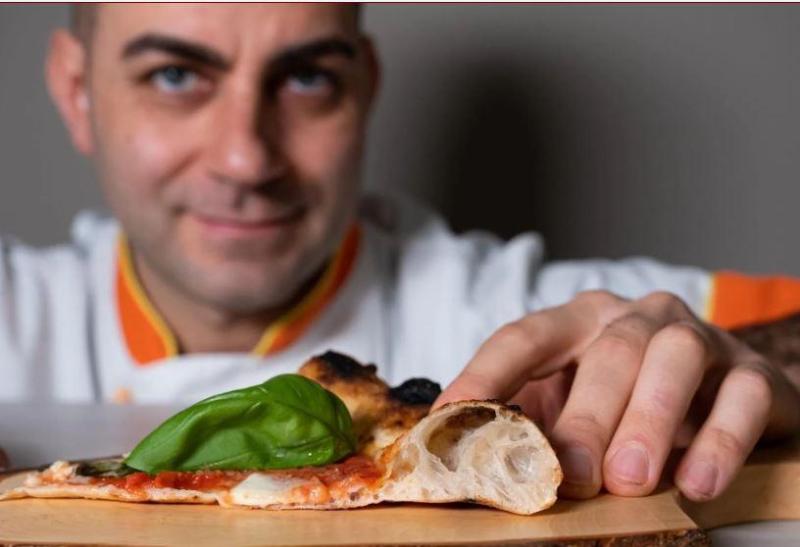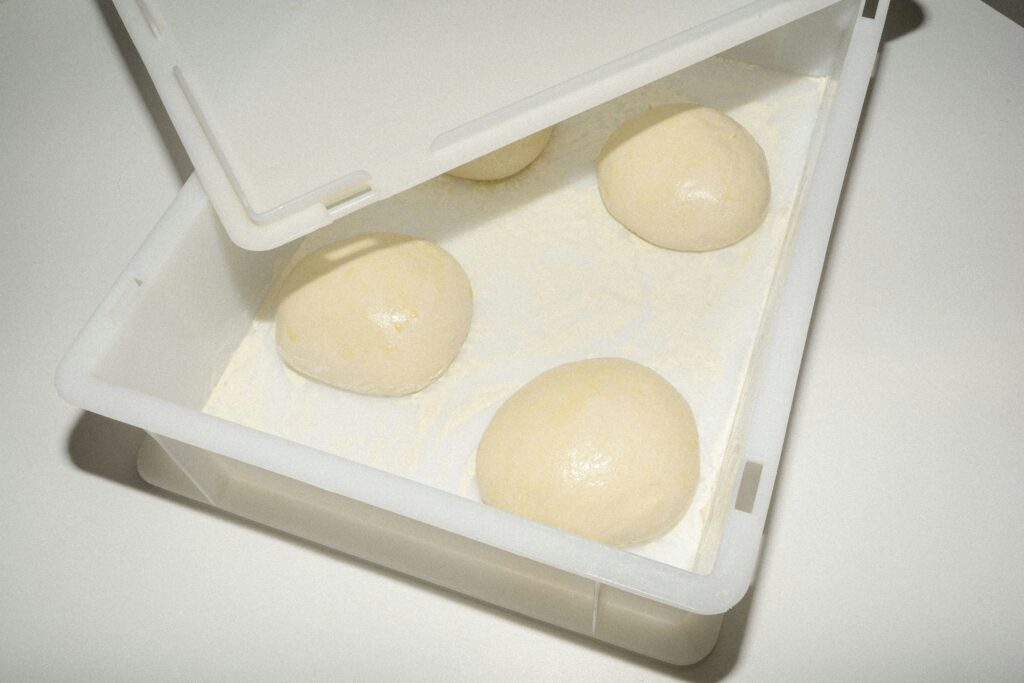
When we talk about pizza – the most known gastronomical proposal in the world – we must distinguish two big classes.
The first one is the traditional pizza, served on a plate, usually prepared in front of the customer and baked for few minutes in the oven at a temperature of 330/350° for the classic one and 450° for the Neapolitan one.
The second class includes frying pan pizza, pan pizza, pizza in pala and focaccia.
Apart from the technique used to make the dough, all these products are usually prepared in a laboratory where they are pre-baked and served to the customer at a later time. Pre-baking method allows to obtain a more structured and chewable product and to better optimize the work.
Among these, the most interesting product is Roman style pizza in pala, both for its crunchiness and its lightness.
Its name comes from the working method of Roman bakers, who used to bake pizzas with a long “wooden shovel”, thing that still characterizes this product today. Also called “spianata” or “stirata”, it was born in the Neapolitan area and it was later developed in particular in the area of Rome. As for kneading, it varies little from pan pizza; however, it differs substantially for baking, instead, as pizza in pala is baked directly on the base of the oven whereas pan pizza is baked directly in the pan, as you can guess from the name.
Pizza in pala dough needs a very high hydration, usually from 80% up to 90% of water. It has a long shape and bakes at lower temperatures than classic pizza, about 280/300° for a longer time, from 7 to 10.
Pizza in pala can be made with different dough making techniques, from direct dough where all ingredients are put in the mixer in one single phase, to indirect dough, made in two times, with a pre-kneading phase. It can be used the biga, a dry pre-dough made of water, flour and yeast that is left to ferment at room temperature for 18/20 hours and used in proportion in the dough. Alternatively, poolish can be used, a pre-dough made with water and flour in equal ratio together with a percentage of yeast determined by the leavening times of the recipe. After 15/16 hours at room temperature, all the other ingredients are added.
In order to obtain a well alveolated and digestible product without adding improvers, the right choice of flour is crucial. Traditionally, it is used wheat flour “00”, which must be strong, rich in gluten (it is important in order to give the dough the elasticity needed for an optimal working) and capable of keeping carbon dioxide developed during leavening. In the last years pizza makers have been paying more and more attention to the addition of alternative flours, such as whole meal flours, durum wheat flour, soy flour and – in small quantities – rice flour, in order to obtain original, crisp and tasty dough.

These special attentions are not enough to create the perfect “pizza in pala”. Whether it is direct or indirect, kneading is a fundamental step for making the perfect “pizza in pala”. It must respect very precise steps, the first of which consist in putting together all the flour, the yeast and 60% of the total cold water quantity. Adding all the water immediately would inevitably compromise the dough, creating evident problems of structure and preventing the mixer from creating the proper gluten net for high hydration dough. Once the optimal kneading structure has been obtained, all the elements of the recipe are added, ending with the remaining water. Another quality aspect is the pizza spreading, which is the signature of the product; it requires “obsessive” precision in pressing on the “right points”, allowing the pizza to develop and evenly swell inside the oven.
Pizza in pala can be an excellent alternative to classic pizza or even the main product offered in pizzerias if you believe in this light and crispy version that can be served with attractive toppings on scenic wooden cutting boards.



